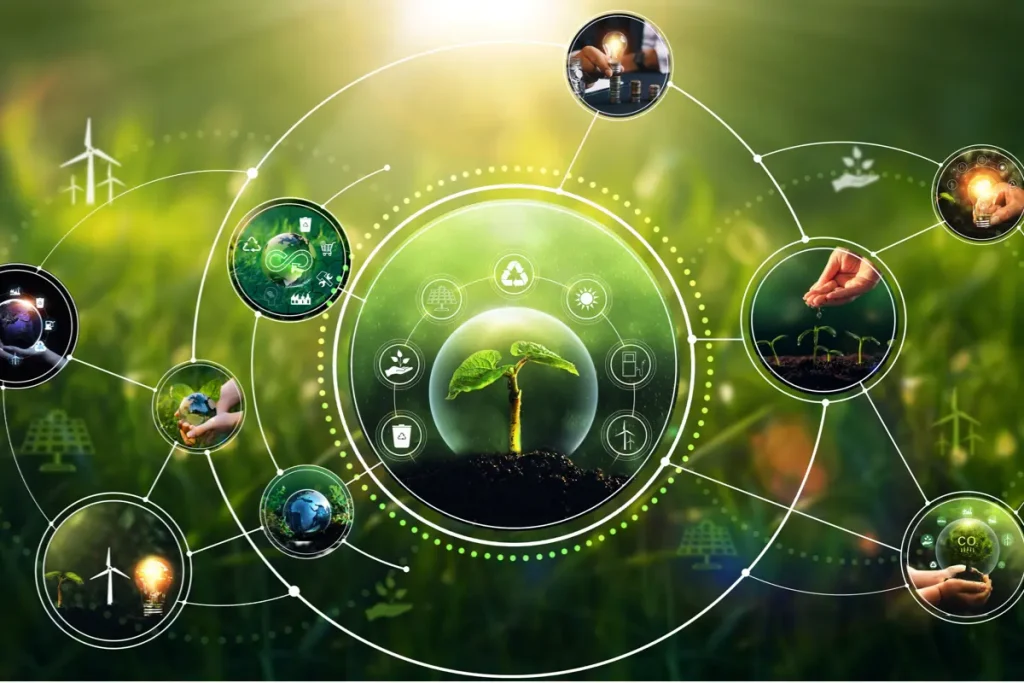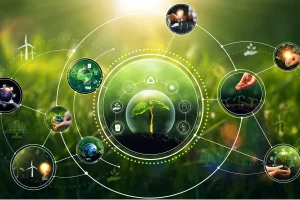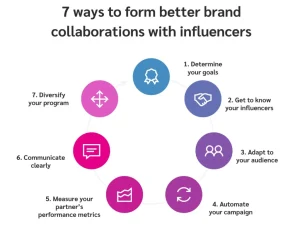Circular Economy Principles: The Blueprint for a Truly Sustainable Business

For decades, we’ve been running our businesses on a linear model: take, make, dispose. We extract resources, transform them into products, and then, well, we toss them. It’s a one-way street that ends in a landfill. Frankly, it’s a system that’s hitting its limits.
But what if we could redesign that entire street? What if waste, as a concept, simply didn’t exist? That’s the promise of the circular economy. It’s not just about recycling a bit more. It’s a fundamental rewiring of how we create value. Let’s dive into the core principles that can transform your business management from a line into a resilient, profitable circle.
What is the Circular Economy, Really?
At its heart, the circular economy is a regenerative system. It aims to eliminate waste and pollution from the get-go, keep products and materials in use for as long as possible, and regenerate natural systems. Think of it like a forest. In a forest, there is no garbage truck. A fallen tree decomposes and nourishes the soil, which in turn supports new growth. It’s a beautiful, closed-loop system. That’s the ideal we’re shooting for in business.
The Three Pillars of a Circular Business Model
To move from theory to practice, we need to lean on three core principles. These aren’t just nice ideas; they’re actionable strategies.
1. Eliminate Waste and Pollution
This is about tackling the problem at the source. Instead of asking “How do we deal with this waste?” we ask “Why is this waste being created in the first place?” It’s a shift from end-of-pipe solutions to radical redesign.
This means rethinking everything from packaging (hello, compostable and reusable materials) to manufacturing processes. Companies like Interface, the carpet tile manufacturer, famously redesigned their entire production to have a zero-waste-to-landfill goal, and they’ve saved millions in the process by viewing waste as a design flaw.
2. Circulate Products and Materials
Here’s where we keep resources in play. This principle breaks down into two powerful cycles:
- The Technical Cycle: This is where we recover and restore products, components, and materials through strategies like reuse, repair, remanufacturing, and recycling. Imagine a smartphone designed for easy disassembly, where every component can be recovered and given a new life.
- The Biological Cycle: This involves returning biodegradable materials to the earth to regenerate living systems. Think of food waste becoming nutrient-rich compost, or textiles made from materials that safely biodegrade.
3. Regenerate Natural Systems
This is the ultimate goal. It’s not just about doing less harm, but about actively doing good. A circular business doesn’t just protect the environment; it helps it thrive. This could mean sourcing materials in a way that supports biodiversity, using renewable energy, or investing in agricultural practices that rebuild topsoil. Patagonia, for instance, isn’t just making durable clothing; they’re actively funding regenerative organic farming practices for the cotton and wool they use.
How to Weave Circularity into Your Business Management
Okay, so the principles sound great. But how do you actually manage this? It’s a shift in mindset that touches every department.
Rethink Your Supply Chain
Your supply chain is the circulatory system of your business. To make it circular, you need to look upstream. This means:
- Choosing suppliers who use renewable or recycled content.
- Designing for logistics that minimize empty miles and packaging.
- Creating reverse logistics systems—that’s the fancy term for getting your products back from customers so you can repair, refurbish, or harvest their materials.
Embrace New Business Models
The most exciting part? You might change how you make money entirely. The circular economy opens up powerful new revenue streams that are more resilient and build deeper customer loyalty.
| Business Model | How It Works | Real-World Example |
| Product-as-a-Service | Customers pay for the use or performance of a product, not ownership. The company retains responsibility for maintenance and end-of-life. | Philips’ “Lighting as a Service” for commercial clients. |
| Sharing Platforms | Maximizes the utilization of products by enabling shared access among multiple users. | Platforms like Peerby for borrowing tools and goods. |
| Resale & Refurbishment | Creating a dedicated channel for selling repaired, refurbished, or pre-owned versions of your products. | IKEA’s buy-back and resell program. |
Design for the Future, Now
This is the cornerstone. Circularity starts on the drawing board. It’s about:
- Designing for Durability: Creating products that are built to last, both emotionally and physically.
- Designing for Disassembly: Using standardized components and avoiding permanent adhesives so products can be easily taken apart and fixed or recycled.
- Using Safe & Circular Materials: Selecting materials that are non-toxic and can be continuously cycled.
The Tangible Benefits: It’s Not Just About Being “Green”
Sure, the environmental case is rock solid. But let’s talk about the business case, because honestly, that’s what makes it stick.
- Cost Reduction: Using recycled materials is often cheaper than virgin resources. Reducing waste means lower disposal fees. Efficiency saves money. Full stop.
- Risk Mitigation: You become less vulnerable to volatile resource prices and supply chain disruptions. If you control your material loops, you’re more insulated from global shocks.
- Innovation & Competitive Advantage: This mindset forces you to innovate in product design, service delivery, and customer engagement. It’s a powerful differentiator in a crowded market.
- Customer & Investor Appeal: A growing cohort of consumers and investors are actively seeking out businesses with authentic sustainability credentials. Circularity is the gold standard.
The Path Forward is a Circle
Transitioning to a circular model isn’t an overnight flip of a switch. It’s a journey. It requires a fresh look at your old processes and the courage to experiment. Maybe you start with a single product line. Maybe you pilot a take-back scheme. The key is to begin.
The old, linear way of doing business is showing its age. It’s brittle, wasteful, and frankly, a bit short-sighted. The circular economy, in contrast, offers a vision of a business that is not just sustainable, but inherently resilient, innovative, and connected to the world it operates in. It’s about building a company that can thrive for generations, not just the next quarter. And that, you know, is a future worth designing for.








